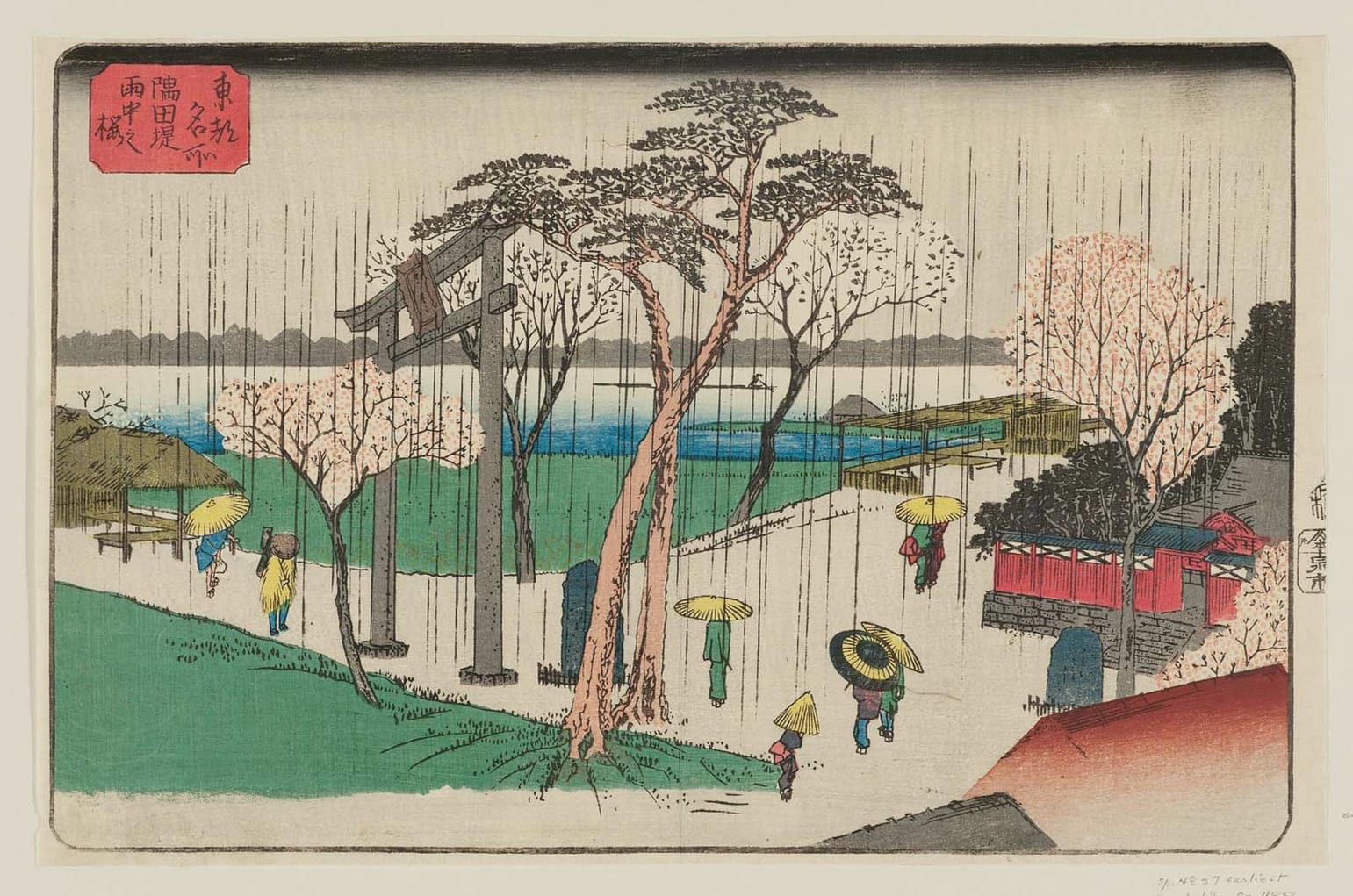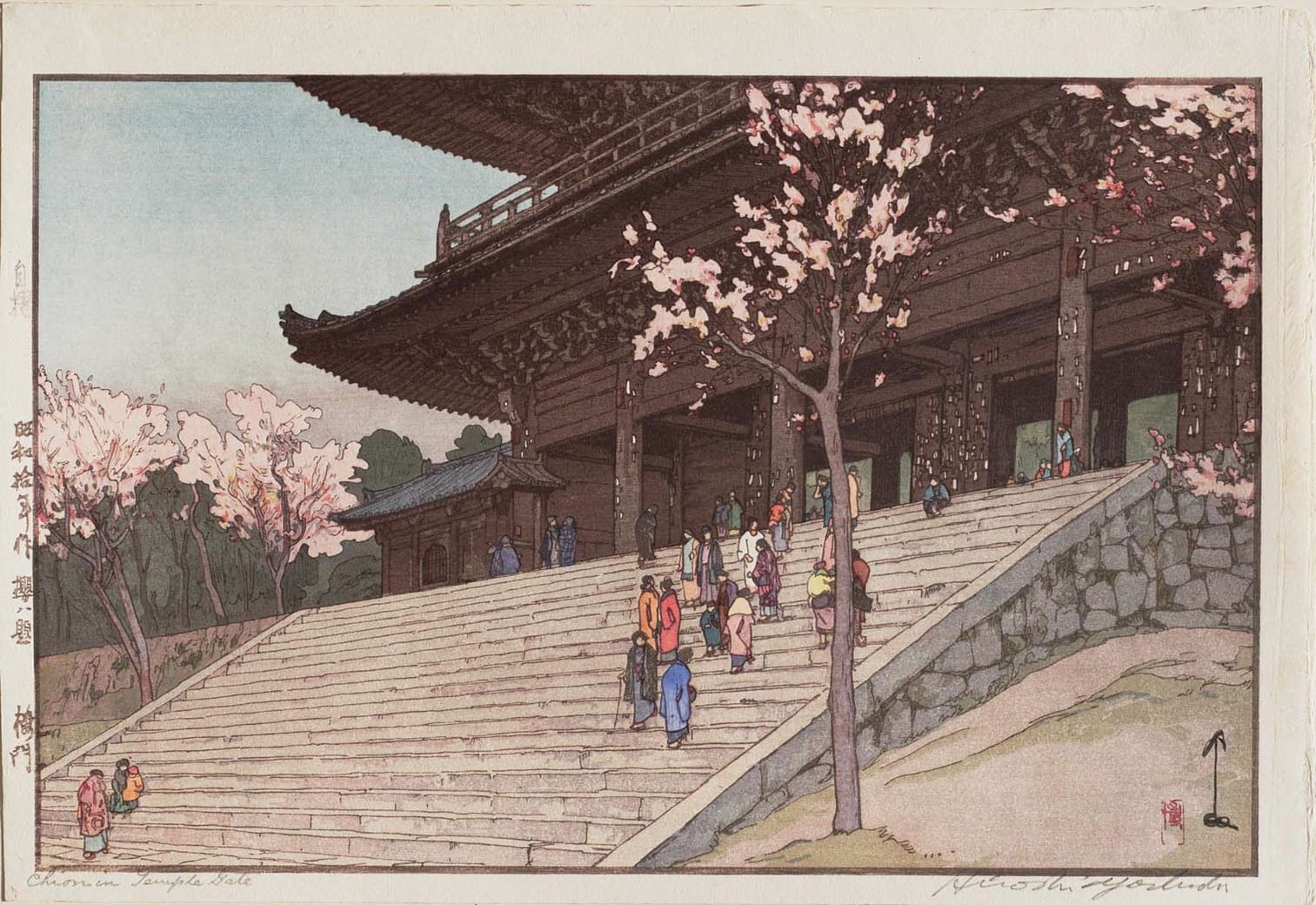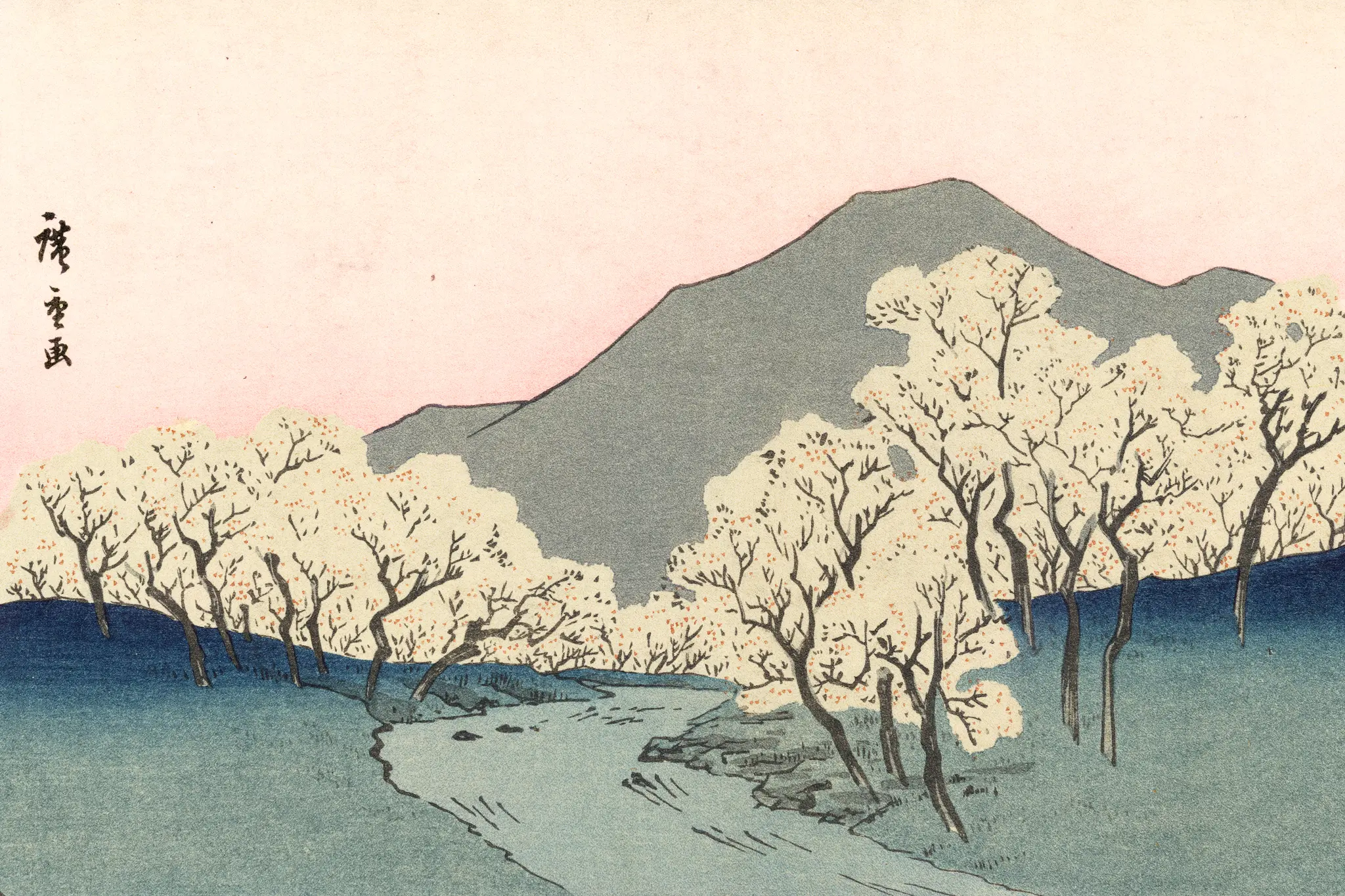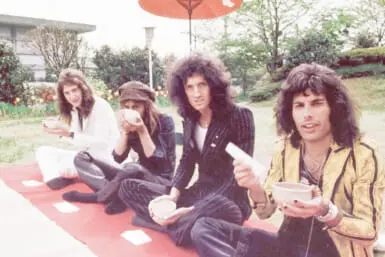Haiku, Japan’s succinct literary gem, is known for packing a wealth of meaning into just 17 syllables and for its intrinsic ties to the seasons. Consider it a poetic capsule that contains the essence of a moment in time and reading it you should be able to conjure the scene in your mind’s eye. More often than not, the season isn’t spelled out, but rather signified through a kigo (seasonal keyword). For spring, this keyword can be anything from “sowing” and “swallows” to everyone’s beloved “sakura.” Cherry blossom haiku abound in the Japanese literary tradition and we have selected a few favorites translated in English.

Utagawa Hiroshige ukiyo-e art of cherry blossoms in the Yoshiwara district
Cherry Blossom Poetry by Saigyo Hoshi
Saigyo Hoshi was a 12th-century poet who became a Buddhist monk. His travels inspired Matsuo Basho, centuries later, to undertake his famous journey to the north. During Saigyo’s time, haiku as we know it today (a 5-7-5 syllables short poem) didn’t exist. Instead of a stand-alone poetry form, it was part of longer poetry chains or essays. Therefore, Saigyo’s poems are technically not haiku, but they have a similar style. He wrote about mono no aware (the bittersweet transience of all things), wabi-sabi and loneliness. One of his topics was the heartache he felt when cherry blossoms bloomed and his wish to die under them. It’s a wish that came true.
Here are two of his poems, reflecting the core of his poetic style.
haru kaze no
hana wo chirasu to
miru yume wa
samete mo mune no
sawagu narikeri
the spring wind
scattering blossoms
I saw it in a dream
but when I awoke the sound
was still rustling in my breast
(Translation sourced from the digital Classic Japanese Database)
–
The cherries’ only fault:
the crowds that gather
when they bloom
(Translation sourced from Early Modern Japanese Literature: An Anthology, 1600-1900, Abridged)

Viewing Cherry Blossoms in the Inner Precincts of the Temple at Asakusa (1857), by Utagawa Kunisato
Cherry Blossom Haiku by Matsuo Basho
Japan’s most famous haiku poet needs no introduction, but just in case, read our article on Matsuo Basho. He popularized haiku as a stand-alone form. Basho lived and wrote in the early Edo Period (1603-1867). He famously wrote about a frog jumping in a pond, a haiku that is categorized as a spring haiku. Of course, he also wrote cherry blossom haiku, describing beautiful scenes and lacing them with transient thoughts.
hana ni yoeri / haori kite katana / sasu onna
drunk by cherry blossoms
a lady wearing a haori coat
and a sword
(Translation by Gabi Greve)
This haiku seems to depict the freedom, fun and sometimes mayhem that occurs during the short but sweet cherry blossom season. Boozy hanami picnics are an old tradition and this haiku is believed to refer to cherry blossom viewing in Ueno Park in the early Edo Period. At that time, women didn’t wear haori coats, nor did they use swords. It follows that this scene encapsulated in a haiku is there to show that anything is possible when the cherry blossoms bloom. Whether a drunk lady was dressing up in jest or bravely wearing what she wanted to wear, we will never know.
haru kaze ni / fukidashi warau / hana mogana
A Spring breeze is blowing
I’m bursting with laughter
— wishing for flowers
(Translation sourced from Matsuo Basho Haiku blog)
There is wordplay in this poem with “warau” meaning both laughing and splitting open (of the bud in this case). Basho was fond of creating layers of meaning, which makes a haiku say much more than its 17 syllables.
Lastly, here is a cherry blossom haiku by Basho that explores the melancholic aspect of sakura.
hana ni akanu / nageki ya kochi no / utabukuro
The blossoms unfailing
my grief this unopening
pouch of poetry
(Translation by Andrew Fitzsimons from Basho: The Complete Haiku of Matsuo Basho)
Although sakura signifies new beginnings and positivity, it also stands for transience and loss of youth and this haiku encompasses that melancholy. Additionally, this is also a tribute to lines from Ise Monogatari written roughly seven centuries prior.

Cherry Trees in Rain on the Sumida River Embankment (1835-39), from the series Famous Places in the Eastern Capital, by Utagawa Hiroshige
Cherry Blossom Haiku by Yosa Buson
A haiku poet who came right after Basho, Yosa Buson lived in the 18th century and wrote some of the most poignant haiku. His cherry blossom haiku has a dreamlike quality, transporting you to the moment of peak bloom. Two of his haiku poems show the sakura as clouds or as a sea of blooms engulfing everything, even reality itself.
kadoguchi no / sakura o kumo no / hajime kana
That cherry tree
by my front gate:
the start of our clouds
(Translation from Terebess Asia Online)
–
haru no umi / hinemosu notari / notari kana
vernal seas…
all day long swelling, falling
swelling, falling
(Translation by Adam L. Kern, The Penguin Book of Haiku)
And as if to wake you up from a cherry blossom dream, this haiku describes the post-bloom scene with its different albeit more everyday beauty.
hana chirite / konomano tera to / narinikeri
The cherry-blossoms having fallen,
The temple belongs
To the branches.
(Translation by R. H. Blyth)

Chion-in Temple in Kyoto (1935) by Yoshida Hiroshi
Cherry Blossom Haiku by Kobayashi Issa
One of the four great haiku masters of Japan, along with Basho, Buson and Masaoka Shiki, Kobayashi Issa was a poet and a Buddhist priest living and writing in the late 18th and early 19th centuries. He was one of the most humorous haiku poets of the times, writing about lover cats, snails climbing Mount Fuji and about living in poverty. He was also one of the most prolific haiku poets, having written more than 20,000 haiku poems in his lifetime. Here is one of Issa’s cherry blossom haiku with a hint of satire and social commentary. This social reading takes the sakura to stand for rich nobles, while the grass represents ordinary people.
waga kuni wa / kusa sae sakinu / sakura kana
in my province
grass blooms too…
cherry blossoms
(Translation by David G. Lanoue)
Of course, Issa also wrote about the beauty of cherry blossoms and how they changed people. In the following haiku, there’s friendship and community, the beauty of shared joys, as well as a possible budding romance.
hana no kage / aka no tanin wa / nakari keri
Under the cherry blossoms
strangers are not
really strangers
(Translation by Zoria P. K.)
Finally, ending with a cherry blossom haiku that is so romantic, it is truly timeless.
kimi nakute / makoto ni tada no / sakura kana
without you–
the cherry blossoms
just blossoms
(Translation by David G. Lanoue)









